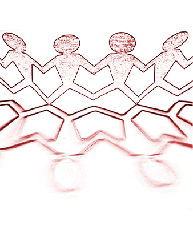Open Positions in the Schiebel Lab
The duration of mitosis is tightly regulated by multiple factors, including the spindle assembly checkpoint (SAC), the phosphatase CDC14B, the kinase HIPK2, and CDC20. Both CDC14B and HIPK2 modulate the expression of cyclin B1 during mitosis. In addition, alternative translational start sites of CDC20 influence the activity of the anaphase-promoting complex (APC/C) and the degradation of cyclin B1. If cyclin B1 levels fall below a critical threshold, cells undergo mitotic slippage, entering G1 without proper chromosome segregation. The duration of mitosis directly affects subsequent cell fate. Cells that remain in mitosis for extended periods of time are arrest in G1. G1 arrest is driven by mitosis-duration-dependent activation of the tumor suppressor p53, which upregulates the cyclin-dependent kinase (CDK) inhibitor p21. In this project, we aim to investigate the crosstalk between mitotic timing and G1 arrest using engineered cell lines and cancer tissue samples. We are seeking highly motivated PhD candidates with a background in cell cycle regulation/mitosis and cell biology. Successful applicants will join an international team of PhD students and postdoctoral researchers working at the forefront of biomedical research. The selected PhD student will be part of the Heidelberg Biosciences International Graduate School (HBIGS). (http://www.hbigs.uni-heidelberg.de/).
PhD position " How to regulate the duration of mitosis and control cell fate decisions"
This PhD position is funded in the first instance for 3 years with starting date based on mutual agreement. The remuneration is based on TV-L E13.
Please send applications to: E. Schiebel (schiebel.elmar@zmbh.uni-heidelberg.de)
Relevant recent publications:
1 Partscht, P. & Schiebel, E. The diverging role of CDC14B: from mitotic exit in yeast to cell fate control in humans. EMBO J 42, e114364 (2023). https://doi.org:10.15252/embj.2023114364 2 Partscht, P., Simon, A., Chen, N. P., Erhardt, S. & Schiebel, E. The HIPK2/CDC14B-MeCP2 axis enhances the spindle assembly checkpoint block by promoting cyclin B translation. Sci Adv 9, eadd6982 (2023). https://doi.org:10.1126/sciadv.add6982 3 Meitinger, F. et al. Control of cell proliferation by memories of mitosis. Science 383, 1441-1448 (2024). https://doi.org:10.1126/science.add9528
